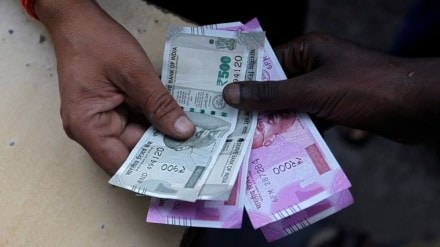The surprisingly low real GDP growth print of 5.4% for Q2FY25 was largely due to low government spending, particularly capex, and lacklustre manufacturing activity. But one more aspect played a key role in depressing the number further — the deflator, which normalised in H1 after being significantly low in FY24.
According to analysts, the July-September growth figure, which was about 100 basis points (bps) lower than market expectations, was also a direct consequence of a high deflator, at 2.25 (y-o-y growth in %) for Q2. In the second quarter of FY24, the deflator was lower than 1; and in Q1FY25, it was close to 2.
Kunal Kundu, India economist, Societe Generale, said: “The sharply lower real GDP print is because of normalising of the GDP deflator. The same culprit was to blame last year but in the other direction: real GDP growth was artificially propped up by an unusually low deflator and masked the ongoing slowdown, as can be seen from the nominal GDP data.”
The deflator is a comprehensive measure of inflation in the economy. It’s an index constituted with WPI and CPI inflation figures, broadly in the ratio of 65:35, and is then compared with the previous year’s index to get the growth figure.
In FY24, the deflator was around 1.3 (y-o-y, in %), and the real GDP growth was 8.2%. The nominal GDP growth in FY24 was 9.6%, which was lower than the pre-pandemic growth of 10.6% in FY19. “In fact, even when real GDP growth was tracking close to 8%, nominal GDP was growing at a near two-decade low, barring the pandemic-affected year,” noted Kundu.
“As deflator is a function of WPI mostly, and partly CPI, it’s only natural that growth would be lower in FY25 (compared to last),” said Abhishek Upadhay, senior economist, ICICI Securities Primary Dealership (I-SEC PD).
“For the second half, the deflator may only be modestly higher than H1, as CPI inflation is likely to be around 5.1% in H2, and WPI is likely to remain the same. Hence its impact on lowering growth could only be marginally high in H2,” said Upadhyay.
The Reserve Bank of India (RBI) has projected CPI inflation to average 4.8% for the full year, 30 bps higher than its previous forecast. It has, however, slashed its GDP projection for FY25 by 60 bps to 6.6%.
In the second half, robust kharif foodgrain production and good rabi prospects, coupled with an expected pickup in industrial activity and sustained buoyancy in services augur well for private consumption, the RBI said in its December monetary policy statement.
“Investment activity is expected to pick up. Resilient world trade prospects should provide support to external demand and exports,” said the RBI, while adding that headwinds from geo-political uncertainties, volatility in international commodity prices, and geo-economic fragmentation continue to pose risks to the outlook.
According to DBS Bank, growth in Q3FY24, is likely to rise to 6.8% from 5.4% in Q2, which will be led by an improvement in industrial production, government expenditure, farm tractor, commercial vehicle sales and external trade in goods and services. “Based on high frequency trends, we expect festivities-led related activities and a catch up in government capex to boost growth in H2, registering a growth rate of 6.3% in FY25,” said Radhika Rao, senior economist, DBS Bank.
